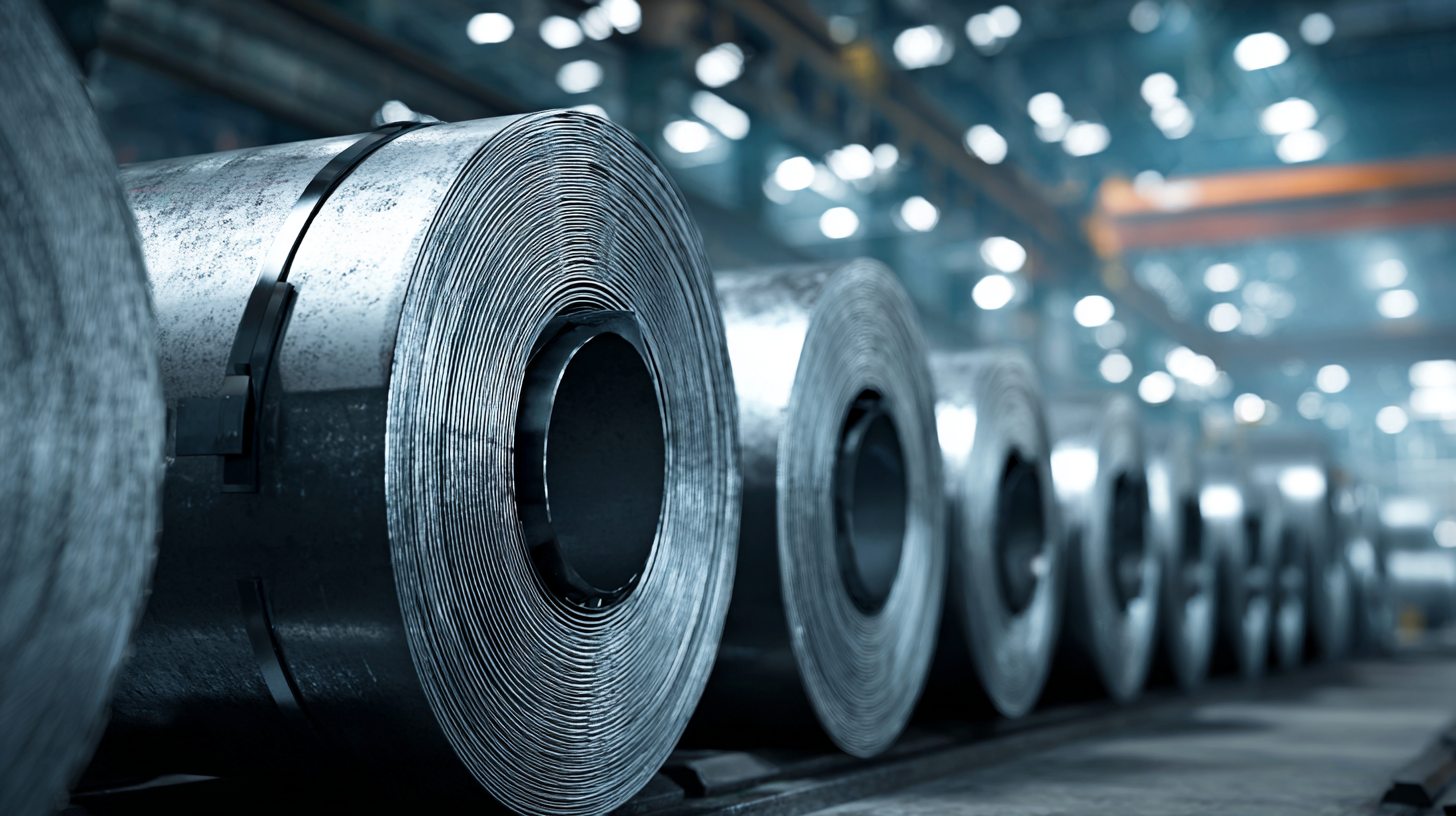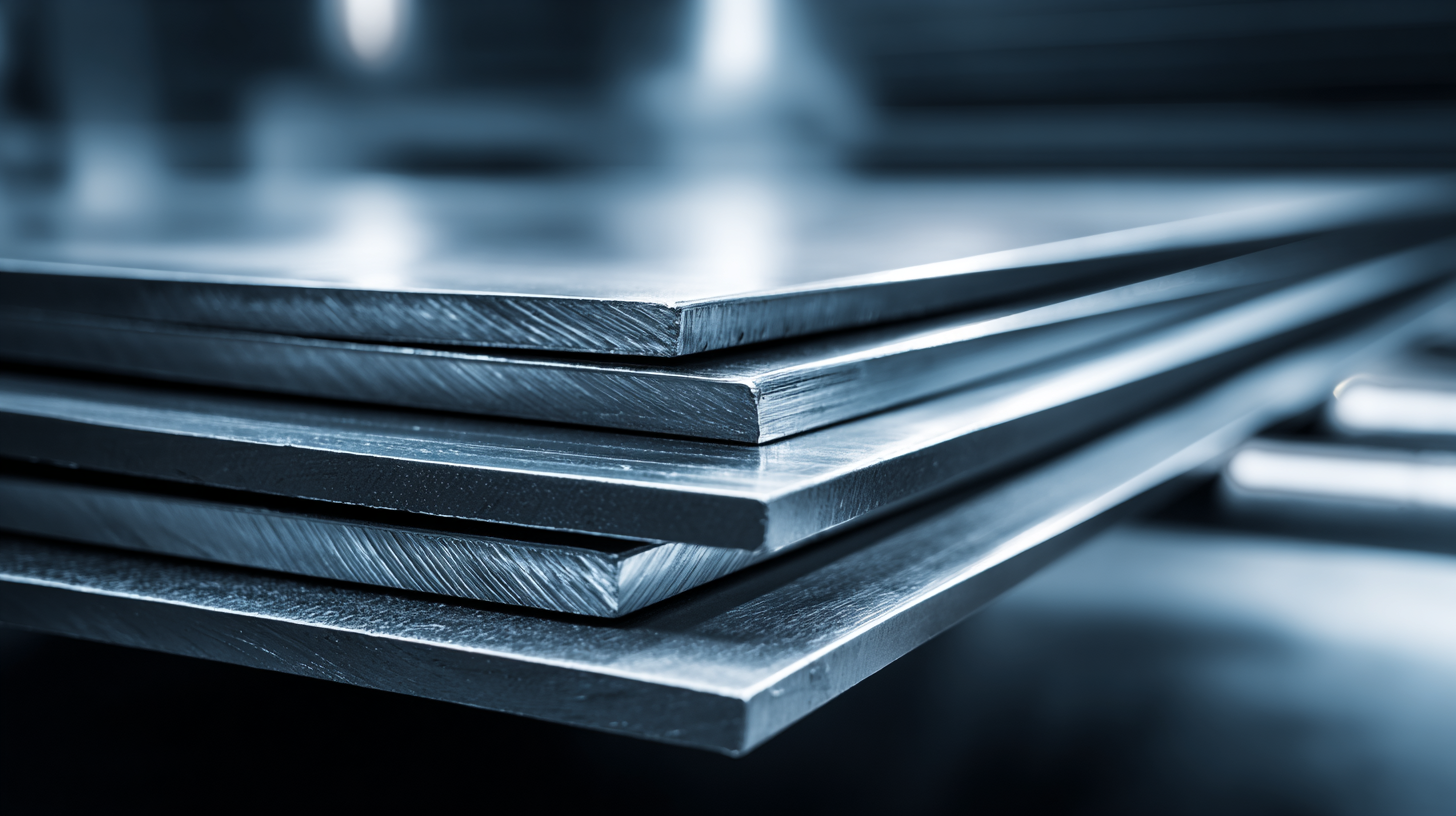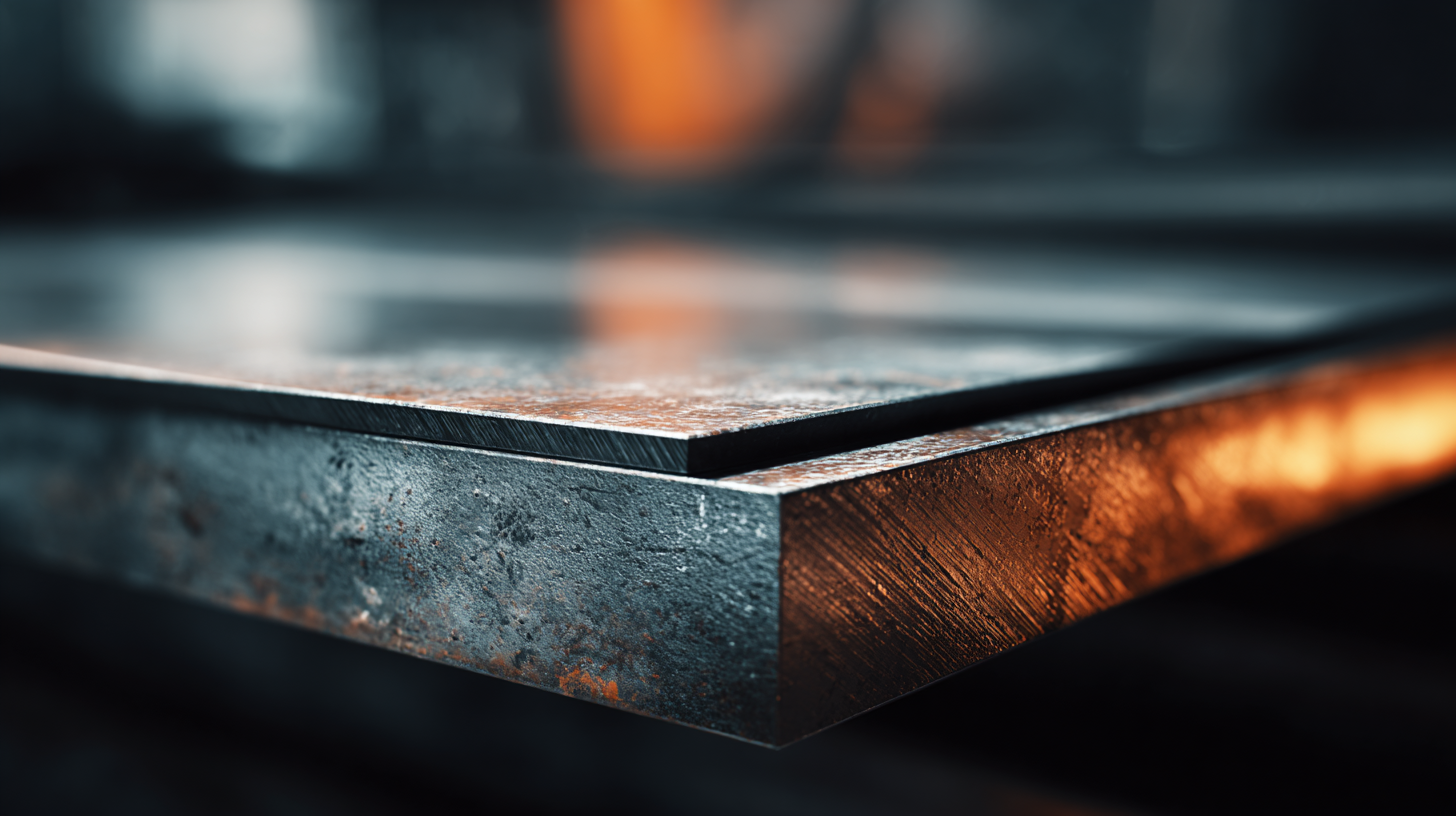Leave Your Message
-
Phone
-
E-mail
-
Whatsapp
In today's manufacturing landscape, selecting the right materials is critical to achieving both performance and cost-effectiveness, particularly when it comes to Steel Sheet. According to the latest market analysis by Grand View Research, the global steel sheet market is anticipated to reach approximately $500 billion by 2028, driven by increasing demand across various sectors such as automotive, construction, and energy. The versatility of steel sheets—characterized by their strength, durability, and adaptability—makes them an essential component for countless applications. However, with a plethora of options available, mastering the purchase process requires a thorough understanding of technical specifications, including thickness, coating, and finish. This guide aims to equip you with the knowledge necessary to choose the best steel sheet for your needs, ensuring you make informed decisions that align with industry standards and project requirements.

When it comes to selecting the best steel sheet for your projects, understanding the different types and their respective applications is crucial. Steel sheets come in various grades and finishes, tailored for specific industrial needs, ranging from automotive components to architectural structures. The choice of steel sheet can significantly impact the durability, aesthetic appeal, and overall performance of your final product.
Tips: Consider the Type of Steel Sheet
There are several types of steel sheets, including carbon steel, stainless steel, and electrical steel. Each serves unique purposes; for instance, stainless steel is favored for its corrosion resistance in environments like kitchens and hospitals, while electrical steel is vital in the manufacturing of electric motors and transformers due to its magnetic properties. Keeping the intended application in mind will help you narrow down your options effectively.
Tips: Assess Your Project Requirements
Before making a purchase, evaluate critical factors such as strength, flexibility, and thickness. For high-stress applications, such as in transportation or construction, opting for high-performance steel sheets can ensure safety and longevity. Additionally, consider environmental factors such as corrosion, which could influence the material choice, especially in bridge construction or outdoor installations. By aligning your steel sheet selection with these requirements, you can enhance the success of your projects.

When embarking on a project that requires steel sheets, understanding your specific requirements is crucial. The first factor to evaluate is size. According to the ASTM specifications, steel sheets can vary significantly in dimensions, which can affect your project's efficiency and costs. For instance, standard dimensions often include widths ranging from 36 to 60 inches and lengths from 96 to 120 inches, but custom sizes can be sourced. Tailoring the size of the steel sheet to match your project needs can minimize waste and optimize material usage.
Thickness is another critical aspect that directly impacts the strength and durability of the steel sheet. Research compiled by the Steel Markets Update indicates that the most commonly used thicknesses range from 0.015 inches to 0.25 inches for various applications. Selecting the right thickness not only ensures structural integrity but also determines the sheet's suitability for processes like welding, cutting, or forming. For many industrial applications, a thickness between 0.063 inches and 0.187 inches is often ideal, balancing flexibility and resistance against external forces.
Lastly, the grade of the steel sheet defines its chemical composition and mechanical properties. According to the American Iron and Steel Institute (AISI), different grades possess unique attributes such as tensile strength, ductility, and corrosion resistance. For example, A36 steel is favored in structural applications due to its excellent weldability and availability, while higher grades like A572 provide improved strength for demanding tasks. By carefully assessing size, thickness, and grade, you can ensure that your selected steel sheet aligns perfectly with your project's requirements.
When selecting steel sheets for your projects, durability is a critical factor that should not be overlooked. The first aspect to consider is the steel grade; different grades offer varying levels of strength and corrosion resistance. For instance, stainless steel is often preferred in environments prone to moisture or chemicals, while carbon steel may be more suitable for structural applications. Understanding the specific conditions in which the steel will be used can guide you toward choosing the most appropriate grade.
Another essential factor is the thickness of the steel sheet. The thickness not only impacts the sheet’s strength but also its weight and flexibility. Thicker sheets typically provide better durability, especially in high-stress environments, but they also increase the overall weight of the assembly. Additionally, consider the type of finish applied to the steel. Protective coatings can greatly enhance the lifespan of the material by preventing rust and degradation, making it vital to choose a finish that aligns with your project's demands. By carefully evaluating these factors, you can ensure that your choice of steel sheet will stand the test of time.

When it comes to purchasing steel sheets, understanding the cost implications is essential for maximizing value. According to a recent market analysis by Research and Markets, the global steel sheet market is projected to reach USD 200 billion by 2024, with an average annual growth rate of 2.5%. This growth indicates an increasing demand, but prices can vary significantly based on steel type, thickness, and finish. By focusing on these factors, buyers can better navigate the pricing landscape and identify the best options for their specific projects.
**Tip:** Always request quotes from multiple suppliers and compare not just the base price, but also shipping costs and the quality of the materials offered. This approach can reveal hidden costs and lead to significant savings.
Additionally, consider utilizing online calculators that provide real-time pricing based on market conditions, such as the MetalMiner IndX, which tracks metal prices. This information can empower you to make informed purchasing decisions. Remember, while it might be tempting to go for the cheapest option, sometimes investing in higher quality steel can save you money in the long run due to improved durability and reduced need for replacements.
**Tip:** Keep an eye on market trends and seasonal fluctuations, as steel prices may drop or rise based on various economic factors. Planning your purchases around these trends can enhance cost-efficiency.
| Steel Sheet Type | Thickness (mm) | Price per Sheet (USD) | Weight per Sheet (kg) | Best Application |
|---|---|---|---|---|
| Cold Rolled Steel | 1.5 | 50 | 35 | Automotive Parts |
| Hot Rolled Steel | 3.0 | 70 | 85 | Construction |
| Stainless Steel | 2.0 | 120 | 50 | Food Processing |
| Galvanized Steel | 2.5 | 80 | 65 | Outdoor Structures |
| Aluminized Steel | 1.0 | 90 | 30 | High-Temperature Applications |
When navigating the landscape of steel procurement, effective negotiation with suppliers is paramount. The latest industry reports indicate that around 60% of businesses encounter challenges during their initial supplier interactions, often leading to less favorable pricing. A well-prepared buyer can significantly improve their outcomes by understanding the market dynamics and conducting thorough research on current steel prices, which fluctuate depending on demand and supply chain conditions. For instance, according to a 2023 Steel Market Briefing from the World Steel Association, steel prices have risen by approximately 15% over the past year due to increased global demand and supply chain disruptions. Having this information at your fingertips allows you to articulate your needs more convincingly.
Additionally, fostering relationships with your suppliers can lead to better negotiation outcomes. Data shows that companies which engage in long-term partnerships with their suppliers are often able to negotiate terms that favor both parties, yielding savings of up to 10% on larger orders. Prepare a list of potential suppliers, and don’t hesitate to ask for references or case studies on previous clients they've worked with. A well-informed buyer who is proactive not only establishes credibility but also opens the door to potential discounts or more advantageous terms, crucial in an industry where every percentage point counts.
This chart illustrates the average price per square meter of steel sheets at varying thicknesses. As thickness increases, the price tends to rise due to the increased amount of raw materials and production costs involved.
